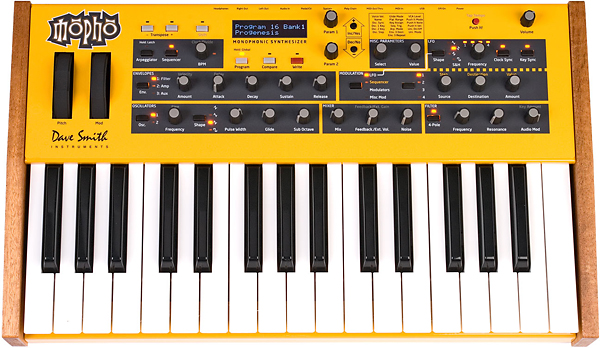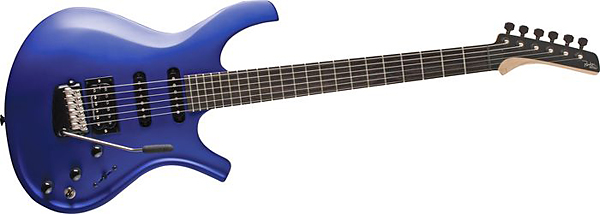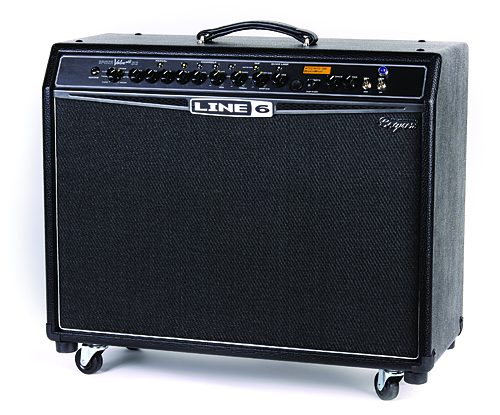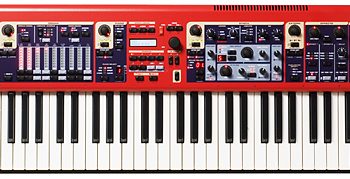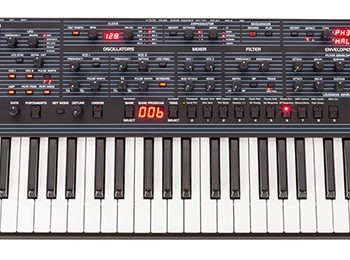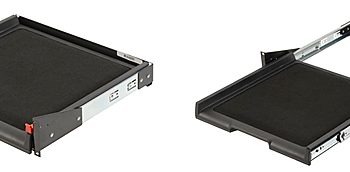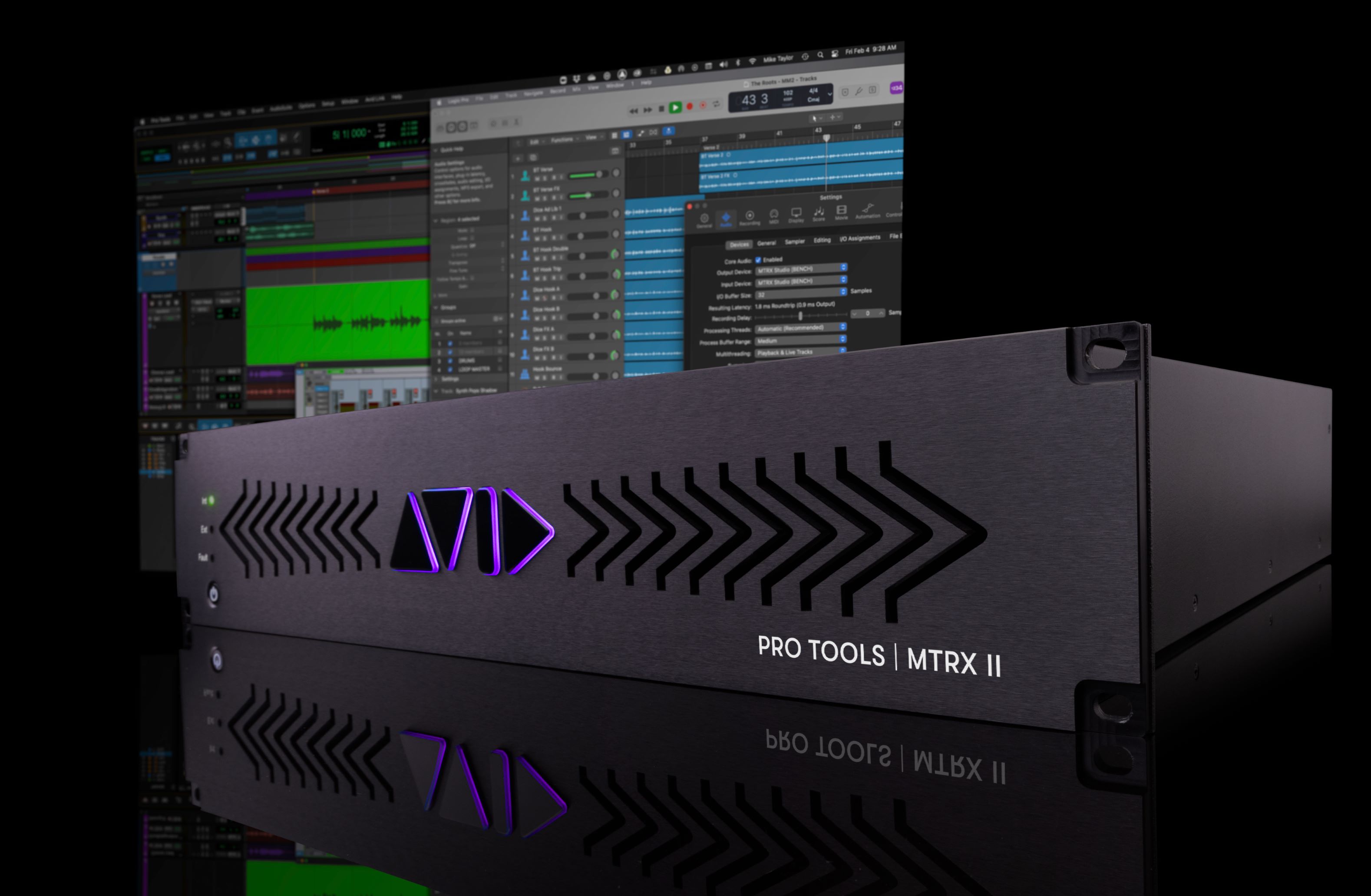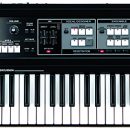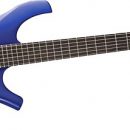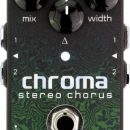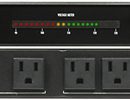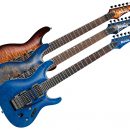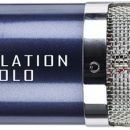 It should be no secret by now that we really dig Dave Smith Instruments gear. The Prophet ’08 (reviewed here) is one of our favorite analog synthesizers of all time. Given Dave Smith’s history of great designs, including the original Prophet 5, it is hardly surprising that DSI continues to make great sounding synths.
It should be no secret by now that we really dig Dave Smith Instruments gear. The Prophet ’08 (reviewed here) is one of our favorite analog synthesizers of all time. Given Dave Smith’s history of great designs, including the original Prophet 5, it is hardly surprising that DSI continues to make great sounding synths.
The Mopho was originally introduced as a monophonic small-footprint desktop module. Featuring (essentially) one voice of the Prophet ’08, it offered a taste of DSI sonic goodness in a very compact size (comparable in size to some guitar stomp boxes!).
| Category | Value | Rating |
| Features | 20% | |
| Usability | 25% | |
| Sound | 25% | |
| Documentation & Support | 10% | |
| Price | 20% | |
| OVERALL RATING = 3.7, which earns it a WIHO Award! 3.6 stars or better: Outstanding, WIHO Award 3 stars or better: Worth considering 2 stars or better: Suited to specific needs 1 star or less: Not recommended |
||
Now, DSI has released a keyboard version of the Mopho. But this is more than just the original module with thirty-two keys grafted on. More potentiometers and rotary encoders are present than on the original Mopho module (there’s more space for them now) for instant parameter changes, you get pitch and mod wheels, the software has been updated for better response time than on the Mopho module, there is an audio input for processing external audio signals, a USB port, and even a free software editor you can download. On top of all that, you get the coveted DSI sound.
That leads us to the fundamental question: is just a taste of something so good satisfying enough? Or does it leave you craving more (i.e., a Prophet ’08)? Only you can answer that question, but if you’re looking for a killer sounding monophonic analog synth, you can’t go wrong with the Mopho.
[Editor's Note: Since the time we published this review, DSI has released the Mopho x4, reviewed here.]
Features
It is hard to miss the Mopho keyboard in anyone’s rig given the distinctive yellow chassis, which is a rugged metal case with wood end-pieces. To paraphrase from the DSI site:
“…the voice architecture features two oscillators, two sub-octave generators, selectable 2- or 4-pole low-pass filter, feedback, and several modulation options, including three envelope generators, four LFOs, and a 16 x 4 step sequencer… the full-sized, semi-weighted, 32-note keyboard is velocity and aftertouch sensitive and there are full-sized pitch and modulation wheels. The Poly Chain feature enables expanded polyphony using other DSI synths, such as combining a Mopho Keyboard with a Tetra results in a five-voice poly synth. Other features include USB and the ability to process external audio through Mopho’s filter and VCA, via the Audio In ¼ inch jack…”
That’s a lot of information in a short paragraph, so we’ll break it down a little further. There are three sound banks of 128 sounds each, whose names are viewable in the centered LED screen, Above the 32-key keyboard are several rectangular sectioned control areas, with a blue two-line LED screen at the top center. The arpeggiator section is at the top left, and it contains two buttons and a rotary encoder (detented) for BPM, latching, and sequencing. Below that section is the envelope section, which has five pots (including the expected ADSR pots).
 Several dual-function pots have their primary functions printed in white lettering underneath, with the alternate function (obtained by pressing the gray Shift button) labeled above the control in gray.
Several dual-function pots have their primary functions printed in white lettering underneath, with the alternate function (obtained by pressing the gray Shift button) labeled above the control in gray.
Mopho has three five-stage (delay + ADSR) envelope generators. One is dedicated to the filter, one is dedicated to the amplifier, and the third is assignable to any modulation destination. A button in the envelope section toggles which of these you are currently editing, which is shown by which LED is lit up next to the corresponding name. You may also opt to have the other envelope parameters control all three envelopes simultaneously.
Underneath the envelope section is the oscillator section. There are two oscillators that are controlled digitally, but the oscillators themselves are analog. This was done to provide better tuning over the 10-octave range the Mopho can produce (anyone who has owned a classic synth such as the Oberheim OB- series knows what a problem tuning fluctuations in analog synths can be!).
In the oscillator section there is the Oscillator Selector button (1, 2, or both), and then an encoder (detented) that controls frequency (sets the base oscillator frequency, stepping in semitones from 8 Hz to 8 kHz), and Fine Frequency (press the gray Shift button at the top of the Mopho and turn the same knob). Next to this is a Shape Select button (sawtooth, triangle, saw-triangle, square, and off), followed by pots for Pulse Width, Glide (portamento), and Sub-octave, which controls the level of a square wave pitched one octave below Oscillator One or two octaves below Oscillator Two.
Next to this is the mixer section, which has controls for Mix (mixing the outputs of Oscillator One and Two, Feedback (since the left out is normalled to audio in, increasing the feedback level with nothing plugged into the Audio In jack causes more of the left output signal to be fed back into the audio path pre-filter; if an audio cable is plugged into the Audio In jack, this feedback loop is broken and the audio is processed by Mopho’s filter and VCA. Finally, the Noise pot controls the volume of white noise level.
On the right side of mixer is the filter section, which has a button for selecting two- or four-pole modes, a pot for Frequency (sets the base cutoff frequency over 13 octaves), and pots for Resonance, Audio Modulation (controls the amount of audio from Oscillator One used to modulate the filter cutoff frequency), and with the Shift key, key amount (sets amount of modulation from the keyboard to the filter cutoff).
Most of the remaining right side of the Mopho panel is the modulation panel, which controls four low-frequency oscillators (LFO). One cool detail is that the four numbered lights above the Frequency knob pulse at the frequency of the corresponding LFO. This provides a quick visual indication of the speed of the four LFOs.
The remaining encoders and buttons in the modulation section represent controls over signal routing, LFO waveform shape (sawtooth, square, etc), frequency, clock sync (the LFO can sync to an internal or external clock). Clock sync can be used to modulate a parameter in time with the sequencer, useful for locking filter sweeps in time with a performance.
And speaking of the sequencer, the Mopho sports a nice one. It comprises four sixteen-step sequences played in parallel. Each sequence can to be routed to its own destination, and each step in a sequence can be set to a desired value. Mopho’s sequencer is a gated sequencer, therefore requiring a note to be played on the keyboard (or the “Push It!” button) to start and stop the progression.
Anytime a pot is turned, the LED screen automatically displays what you are adjusting- and the response time is very quick.
Jacks on the back of the unit include Headphones, Right and Left outputs, Audio In, Pedal/CV, Sustain, Pol Chain (to connect to other DSI instruments for expanded polyphony), MIDI In/Out/Thru, USB, and an On/Off switch. Curiously, the power switch was extremely small, surprising given the otherwise excellent attention to detail in the Mopho’s construction.
 Usability
Usability
Though we did not review the original Mopho module, the keyboard version has a similar architecture to the original. If you loved the original, you will love the keyboard version.
Not to be funny, but it’s as easy as plugging it in and turning it on. We enjoyed going through the presets one by one, and nearly all were inspiring enough to start writing new tunes. Want to change the sound? Pick a knob and start turning! While the venerable Roland Juno 106 was a great keyboard in its time to learn synthesis on (due to its well designed front panel), the Mopho keyboard allows that same enjoyable, educational experience as well, only in a deeper, twenty-first century way. We found the keyboard sturdy and fulfilling, and the response time of the controls was immediate.
Some players may not like having to press the Shift key to get an additional function out of a button or pot, but this approach worked very well. Remember this is only a thirty-two-note keyboard, and thus has limited real estate on the panel. Given the space constraint, we thought the Mopho was very well laid out, with everything clearly labeled.
The only thing that might be a problem, however, is that while there is an LED screen, the individual knobs are labeled with screen printing on the case and are not backlit. On a dark stage, additional may be needed for real-time tweakers.
The feedback function and Audio In mixing were very exciting features, which allowed us to take an outside signal an process it through Mopho’s filter and VCA. We took a Korg Triton LE and connected it to the Audio In of the Mopho. The process worked flawlessly and made for some very unique, evolving sounds with real-time analog manipulation.
Another feature is the Mopho Sound Editor, which provides a computer-based editor. The SE version is a free download from Sound Tower, while the Pro version is $40. We wish then Pro version was included in the box, but for $40 this is a small gripe.
The SE version (Mac OS and Windows) provides a graphical representation of all editable parameters, and you can drag/draw envelope curves visually in a manner common to other synth editors. The Pro Version is more useful as it allows creation of sound libraries and arpeggio patterns. It also includes two interesting features: a Program Genetics function, where entire banks of new sounds are created from any two source programs, and a Morpher function, allowing you to smoothly transition (morph) between any two programs as the sound is auditioned in real time. We didn’t have the Pro editor for review, but the SE version worked well.
The “Push It!” button gives an instant sampling of the sounds. This makes sense on a module with no keys, but on a keyboard with keys, it seemed a bit unnecessary (it was probably just a carry-over feature from the keyboardless Mopho). However, this button with the Shift key pressed turns into a Tap Tempo button, which obviously proved much more useful.
A quick note about the arpeggiator: this has been upgraded from the original as well. It now offers more modes than the original, and patterns can now travel over several octaves. Despite being a monophonic keyboard, the arpeggiations are deceiving and often sound like much more is actually going on.
While we (unfortunately) didn’t have any other DSI equipment in our studio at the time of this review, the Poly Chain function allows linking of multiple DSI synths/modules for more polyphony. According to DSI, hooking up a four-voice Tetra to the one-voice Mopho gives you five total voices, and best of all, the Tetra parameters automatically become controlled by the Mopho’s front panel. How many monophonic synths allow you add polyphony later? Very cool.
Sound
Dave Smith Instruments. Need we say more?
The preset are musical and inspiring. Most got us ready to fire up our studio and start recording new tunes right away! There were plenty of modern sounding presets and plenty of inevitable “old classics.” We know Dave Smith has a wry sense of humor, and we enjoyed the preset labeled “Fortunate Guy,” which was clearly the ELP “Lucky Man” patch. Another patch called “Pinball” was clearly taken from Pete Townsend’s arsenal of keyboard sounds.
Again, we must emphasize that this board is not only about recreating classic sounds. The fact that there is an all-analog signal path means that the sounds have a beefy, organic quality to them: thick basses, swirling atmospherics, and leads that cut through a mix. The fact that the Mopho combines the best things from classic analog synths (like real Curtis components!) with present day expectations (MIDI, USB, software editing, digital stabilization of the analog path) means you get the best of all worlds.
It was hard to write this review because we wanted to keep playing and playing, a testament to the Mopho’s playability and musicality. While the presets are great, much of the fun is creating new sounds, which was simple and fun. Beginners and experts alike should be able to really get into the sound editing capabilities, especially with the help of the graphical interface provided by Sound Tower.
Documentation and Product Support
The concise manual was clear, direct, and to the point. There were “short and sweet” examples for using various functions. Compared with other manufacturers’ roughly-translated-from-Japanese manuals, this was a refreshing and enjoyable read. DSI’s website provides quite a bit of information about the Mopho, including an online video demonstrating its use. Well done.
Price
The DSI Mopho Keyboard (MSRP $879) retails for $800, a very good value. However, we liken this synth to eating your favorite ice cream: if you have a spoonful of your favorite flavor, you really enjoy it, but if you see the whole carton sitting on the counter, are you going to be satisfied with the spoonful, or do you want more?
That’s how we feel about the Mopho. It’s awesome, but so good that it makes us crave a full Prophet ’08! If you just need a great monophonic synth for leads, basses, sound effects, etc… you absolutely can’t go wrong with the Mopho.
Editor's Note: Since the time we published this review, DSI has released the Mopho x4, reviewed here.]
Contact Information
David Smith Instruments
www.davesmithinstruments.com
| Evaluation Short-List |
|

